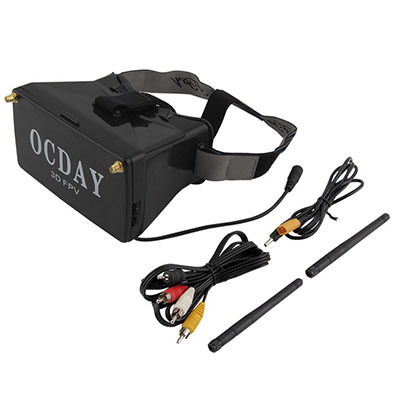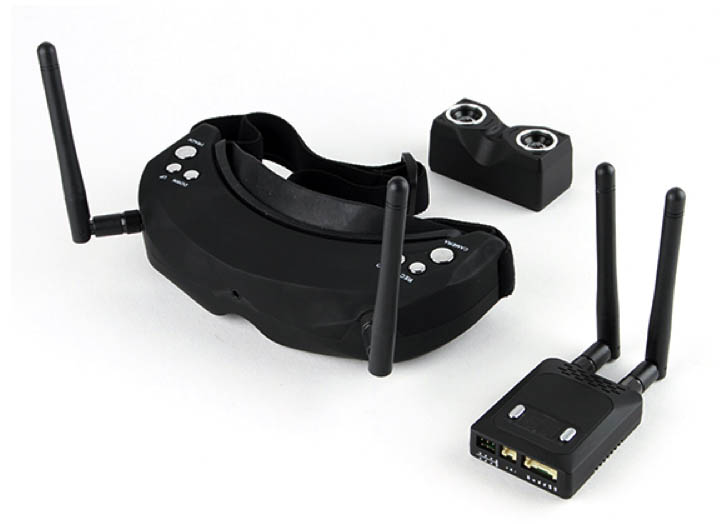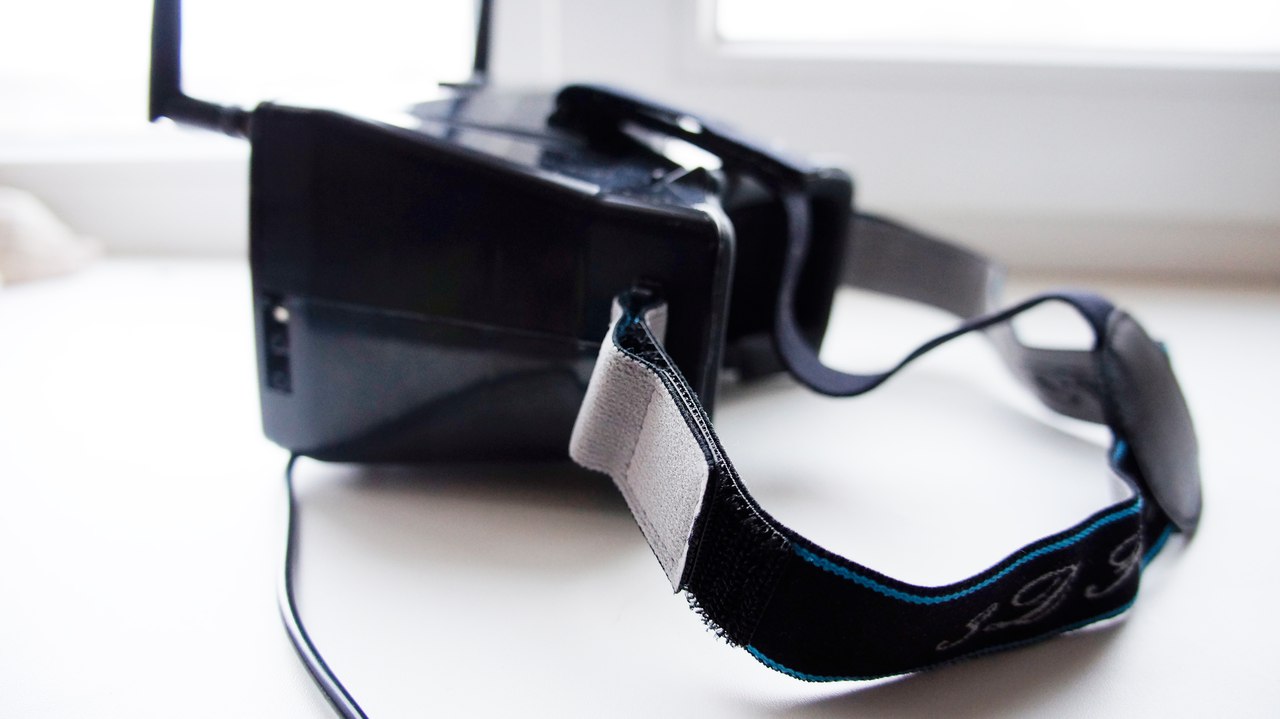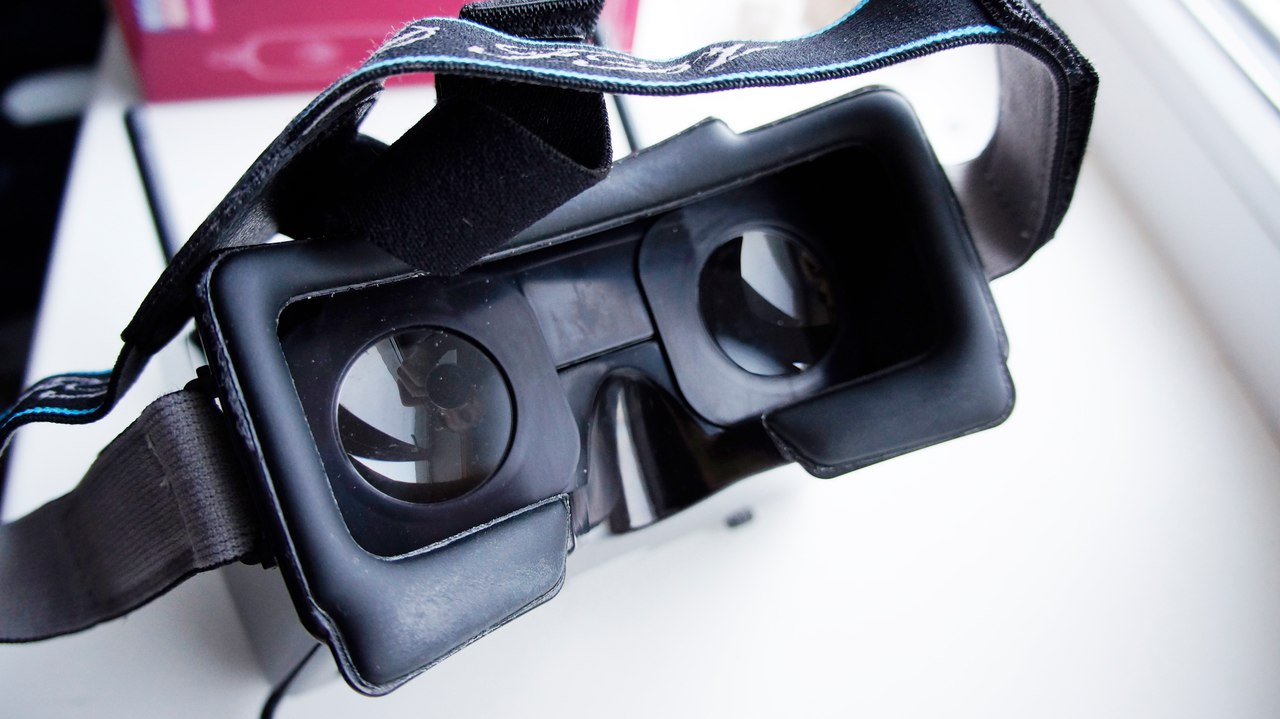3D FPV or how to add realism to flights
 Hello. For quite some time now, I got the idea to diversify ordinary bored FPV flights. And I wanted to diversify them by adding more realism. In other words, so that all this is with maximum immersion in the picture. I decided to achieve this effect in the style of "ala oculus rift." Who does not know, these are virtual reality glasses for PC. With their help, you not only see a picture in 3d, but you can also “look around” in 3d space. In other words, "wherever the head goes, there is the camera." But let's start with the transition of the usual FPV to 3D FPV. For this, it’s good that the glasses are able to show this same 3d-picture. In fact, our dear Chinese have already tried and we don’t even have to "collective farm" anything ourselves. At the moment, there are more and more options for “how to fly in 3d”, but I want to dwell on two fundamental options.
Hello. For quite some time now, I got the idea to diversify ordinary bored FPV flights. And I wanted to diversify them by adding more realism. In other words, so that all this is with maximum immersion in the picture. I decided to achieve this effect in the style of "ala oculus rift." Who does not know, these are virtual reality glasses for PC. With their help, you not only see a picture in 3d, but you can also “look around” in 3d space. In other words, "wherever the head goes, there is the camera." But let's start with the transition of the usual FPV to 3D FPV. For this, it’s good that the glasses are able to show this same 3d-picture. In fact, our dear Chinese have already tried and we don’t even have to "collective farm" anything ourselves. At the moment, there are more and more options for “how to fly in 3d”, but I want to dwell on two fundamental options.The first option is Skyzone SKY-02 5.8G 32CH ( * )

This kit consists of glasses themselves with an integrated receiver, a dual FPV camera and a transmitter that receives 2 video signals from this dual camera and sends it to the glasses. That is, with one eye we see a picture from one camera, with the other from the other. And it turns out the real 3d. Unfortunately, it has not yet been possible to fully test these points, so I can’t tell you about all the pros and cons. Yes, the 3d effect makes itself felt, it is really possible to make a "vomiting" for the brain and to "fall" on top of it while standing out of the blue. However, the price for such a toy is too big in my opinion. By the way, the headtracker in these glasses is already built-in, so there will be no problems with synchronizing the movements of the “head and camera”.
The second option is more budgetary - this is the OCDAY 3D FPV 5.8G 32CH video helmet ( * )

Here the 3d effect is implemented differently. No need for complex "dual" cameras and video transmitters. The picture arriving at the receiver at the expense of the converter is divided into two. In other words, the video helmet monitor is divided into two parts, and in one and the other half you see the same picture, but with the offset necessary to deceive our brain. As a result, just like in the first version, focusing your eyesight, 2 pictures turn into one and we see the effect of a 3d image.
Now I’ll talk about the pros and cons.
Until recently, I flew on FPV in a video helmet with a resolution of 800x480 matrix in widescreen mode. Immediately we have the same 5-inch monitor, however, we see that the picture is not widescreen but 4: 3. That is, the left eye is 440x480 and the right eye is 400x480 ... As a result, we have 800x480, but when the same picture merges into one, we see only 400x480. And getting used to 16: 9 it wasn’t very pleasant to switch to 4: 3. The second minus is the helmet’s not very comfortable position on the head ... Well, straps could be made more authentic (it would be difficult to put them on the cap). :)

Of the pluses, I would like to highlight the fact that a dual receiver is built into the helmet, which improves video reception and thereby removes unnecessary interference. Good enough picture quality. In addition, the selected radio channel is displayed in the corner of the screen. Soft lining (helmet outline) “on the face”. Also, the pluses include adjustable lenses, as I understand it in some versions of FatShark glasses, this has become a problem.

Well, the weight of this helmet is only 330 grams. I think it’s easier than a video helmet. And this is a very significant plus, because weight plays a significant role here. In an FPV helmet weighing more than 500 grams, the neck starts to get a little tired. In addition, the cost of this helmet at the moment starts from 14-15 thousand rubles, which is exactly half the price than, for example, higher than the proposed Skyzone SKY-02. I think the only competitor to this helmet is a regular (not 3d) helmetQuanum DIY FPV . It costs, of course, cheaper, and the picture he gets is 16: 9. However, it still needs a receiver (if compared with OCDAY, then with two antennas) + delivery. as a result, approximately 9–10 thousand rubles will be released. And the weight of this helmet is noticeably more.
As a result, OCDAY 3D FPV is a worthy alternative to expensive glasses. Also, you don’t need a special 3d camera and a video transmitter for it, which means that you can use this helmet on any copter without upgrading it.
So, now you know how to "fly in 3d", but how to make the camera on the copter repeat the movements of the head? And more about that in the next article.
That's all, with you there was a simple service for choosing complex Dronk.Ru equipment .
Do not forget to subscribe to our blog., there will be many more interesting things.
ps * - links marked with a referral asterisk, so you can save extra by returning a cashback of up to 4%. More details at Dronk.ru/cashback/ or you can get 6.5% by purchasing them through the LetyShops cashback service .
Our other publications:
- Chuwi Ilife V5 - a $ 99 robot vacuum cleaner or how to turn daily cleaning into fun
- Great quadrocopter under $ 60 or a review of the JJRC H8C
- What to give a boom for the New Year in the range of 10-20 $? Part 2
- Our small joys or how to please a geek for the new year within $ 10-20?
- The world's first pocket hexacopter for $ 18 - MJX X901
- Are there real discounts on gadgets or what does AliExpress bring to us?

